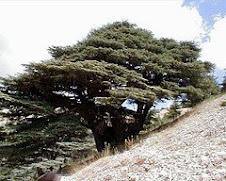Books on Bees for sale online
Books on Trees and Forest Preservation
Nature and Ecology Books
Cradle to Cradle: Remaking the Way We Make Things by William McDonough, Michael Braungart
Earth The Sequel: The Race to Reinvent Energy and Stop Global Warming (Fred Krupp)
Farewell My Subaru; An Epic Adventure In Local Living by Doug Fine
Green Investing A Guide To Making Money Through Environment-Friendly Stocks by Jack Uldrich
Green Living For Dummies by Yvonne Jeffery, Liz Barclay, Michael Grosvenor
Green to Gold: How Smart Companies Use Environmental Strategy to Innovate, Create Value, and Build Competitive Advantage by Daniel C. Esty (Author), Andrew S. Winston (Author)
Living Like Ed; A Guide to the Eco-Friendly Life - Ed Begley, Jr.
Natural Capitalism; Creating The Next Industrial Revolution by Amory Lovins and Paul Hawken
The Omnivore's Dilemma by Michael Pollan
Peterson Field Guide to Birds of North America - Re-issued with new, bigger illustrations, by Roger Tory Peterson
A Safe and Sustainable World, The Promise of Ecological Design by Nancy Todd and John Todd
Silent Spring - Top selling environmental book by Rachel Carson
The World Without Us - Revealing bestseller by Alan Weisman
Books on Frogs and Amphibians
Green Power and Clean Renewable Energy Books
Apollo's Fire: Igniting America's Clean Energy Economy by Jay Inslee / Bracken Hendricks
Careers in Renewable Energy by Gregory McNamee
The Citizen Powered Energy Handbook by Greg Pahl
Clean Electricity from Photovoltaics - Authors: Mary D. Archer / Robert Hill
The Clean Tech Revolution: Discover the Top Trends, Technologies, and Companies to Watch by Ron Pernick and Clint Wilder
Coming Clean by author Michael Brune
The First Billion Is the Hardest; On a Life of Comebacks and America's Energy Future by T. Boone Pickens
Freedom From Oil: How the Next President Can End the United States' Oil Addiction by David Sandalow
Future Energy - by Author Trevor Letcher
Green Your Place In the New Energy Revolution by Jane Hoffman and Michael Hoffman
Profiting from Clean Energy - Author: Richard W. Asplund
Stirring It Up; How To Make Money And Save the World, by Gary Hirshberg.
Untapped; The Scramble For Africa's Oil by John Ghazvinian.
Books on Elephants, African Elephant Books, Indian Elephant Books
More renewable energy stocks investing info:
Wind Energy Stocks Info, Renewable Energy Investing Tips
Solar Power stocks investments, Alternative Energy Investing
Geothermal Power Stocks, Geothermal Energy Company Investing
A Partnership for a Healthier Appalachian Forest
-
Restoring a healthy Appalachian forest has many benefits, for wildlife and
local communities.
The post A Partnership for a Healthier Appalachian Forest a...
6 hours ago






